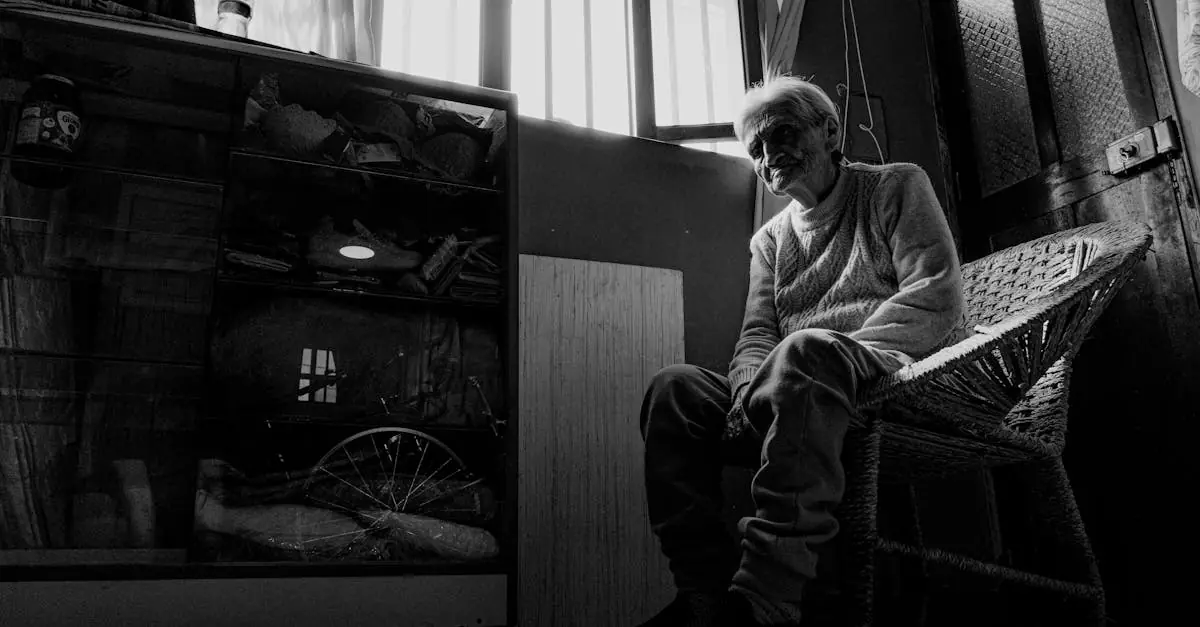Retirement homes promise a life of leisure, but before you trade your lawnmower for a comfy recliner, let’s talk about those pesky HOA fees. They can feel like that one uninvited guest who shows up to every party, but understanding them can make all the difference in your golden years.
Imagine sipping your morning coffee while someone else mows the lawn, but hold on—what’s that monthly fee for? It’s time to unpack the mystery behind HOA fees in retirement communities. These fees can cover everything from maintenance to amenities, but they can also sneakily drain your budget if you’re not careful. So grab your favorite snack and let’s dive into the world of HOA fees, where knowledge is the best retirement plan.
Table of Contents
ToggleUnderstanding HOA Fees in Retirement Homes
Homeowners Association fees play a crucial role in retirement homes. These fees support essential services and amenities that enhance daily living.
What Are HOA Fees?
HOA fees are regular payments required by retirement communities. Residents contribute to shared expenses that maintain the community’s infrastructure. These costs often cover landscaping, trash removal, and security. Additional amenities like swimming pools and fitness centers might also be financed through these fees. Understanding the specifics of these charges helps residents budget accordingly.
Purpose of HOA Fees in Retirement Communities
HOA fees serve multiple key purposes. They ensure the upkeep of community amenities, contributing to a well-maintained environment. Fees also provide funds for communal events and social activities, fostering community engagement. Regular maintenance, including external repairs and landscaping, enhances property value. Residents gain peace of mind knowing their surroundings are well taken care of, making retirement more enjoyable.
Factors Influencing HOA Fees
HOA fees in retirement homes vary based on several factors. Understanding these aspects helps residents anticipate costs and appreciate the value of their investment.
Location and Property Values
Location significantly affects HOA fees. Urban areas typically have higher fees due to increased property values and demand. Rural settings often feature lower fees, influenced by reduced upkeep costs. Proximity to amenities like parks and shopping centers raises property values, which leads to higher HOA fees. Owners in desirable neighborhoods may pay more, reflecting the added benefits of their locale. Additionally, local regulations and taxation impact these costs, shaping the overall fee structure expected by retirees.
Amenities and Services Offered
Amenities and services offered by retirement communities play a crucial role in determining HOA fees. Communities that provide fitness centers, swimming pools, and clubhouses usually incur additional maintenance costs. Higher-end amenities require more significant resources for upkeep, translating into increased fees for residents. Services like landscaping, trash collection, and security features also contribute to the overall expenditure. Communities promoting active lifestyles often include social events and activities, further influencing the fees assessed to residents. Evaluating these amenities helps residents gauge the value received for their investment.
Benefits of Paying HOA Fees
Paying HOA fees offers several advantages that enhance life in retirement homes. These fees ensure maintenance and upkeep of shared spaces, contributing to a pleasant living environment.
Maintenance and Upkeep
Regular maintenance includes services such as landscaping and building repairs. This upkeep ensures community appearances remain attractive, enhancing overall property aesthetics. Residents benefit from professionals handling the maintenance. They don’t have to worry about chores like yard work or snow removal. Scheduled repairs prevent larger issues, minimizing long-term costs. Consistent upkeep also typically leads to increased property values. Homeowners can appreciate the value of their investment through regular enhancements.
Community Engagement and Activities
Engaging communities foster rich social interactions. HOA fees often fund activities and events that unite residents. Organized gatherings promote friendships and connections. Furthermore, these communal activities create opportunities for residents to contribute their skills and talents. Clubs and hobby groups benefit from HOA-supported resources. Support for community-driven projects cultivates a positive atmosphere. Residents find enjoyment and fulfillment through active participation in their community.
Potential Drawbacks of HOA Fees
HOA fees in retirement homes come with potential drawbacks that residents should consider. Financial implications can create obstacles for some retirees.
Financial Considerations
HOA fees often increase over time, which can strain a fixed retirement budget. Payments typically cover shared Community maintenance and amenities, but these costs can grow unexpectedly. Hidden fees may also arise, including special assessments for major repairs. Residents might struggle to adjust to abrupt changes in their financial obligations, especially if they depend on a stable income. Understanding the specific costs associated with HOA fees allows retirees to manage their finances more effectively. Evaluating the overall cost of living in retirement communities, including monthly fees, ensures financial stability.
Restrictions and Regulations
Compliance with community rules can limit personal freedoms. Homeowners associations often implement regulations on property appearances and modifications. Residents may find restrictions on landscaping, exterior paint colors, or renovations, leading to frustration. Disagreements regarding these guidelines may arise, impacting the community’s overall atmosphere. Such limitations can detract from the sense of ownership that retirees seek. Awareness of these regulations before moving in helps individuals align their expectations with HOA standards. Balancing community living with personal preferences remains essential for a harmonious retirement experience.
Conclusion
Understanding HOA fees in retirement homes is crucial for ensuring a comfortable and financially secure lifestyle. These fees play a significant role in maintaining community amenities and fostering social connections among residents. While they can present challenges, being informed about what these fees entail helps retirees make better financial decisions.
Evaluating the specific costs and benefits of HOA fees empowers residents to appreciate their investment in retirement living. By weighing the advantages against potential drawbacks, retirees can navigate their options more effectively and enjoy a fulfilling retirement experience.


